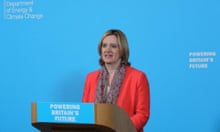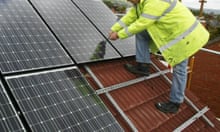What do Sydney’s Young Henrys brewery, Shoalhaven Heads’ Bowling and Recreation Club, and Bendigo library have in common? They’re all hosts to some of Australia’s first solar power projects funded and run by local people in community energy groups.
Projects like these are becoming increasingly popular in Australia. The Coalition for Community Energy (C4CE) 2015 national community energy strategy states that there were 19 community energy groups operating in early 2015, with a further 59 projects in development.
So, why the surge in community energy? The solar energy subsidies are part of the appeal, although for many it’s the fact that it allows local people to decide where their energy should come from, whether that be solar, wind, hydro or other forms, and puts any profits generated into local hands, rather than those of energy companies.
For example, 19 members of the Repower Shoalhaven community group invested $119,800 to pay for 400 solar panels, which were installed on the bowling club roof. The club purchases the energy generated from the panels, which generates revenue for the investors (approximately 7% ROI per year) and helps the club save money (it reportedly saved $4,000 in the first month alone). At the end of the 10-year contract term, the solar power system will be gifted to the club.
Local authorities have taken note. Lismore city council in New South Wales is looking into solar farming options, while Byron shire council, also in NSW, is supporting the creation of Australia’s first community-owned renewable energy retailing and installation business, Enova.

“There are two great benefits of community energy,” the Byron shire mayor, Simon Richardson, explains. “It allows more people to be part of the solution, part of the low-carbon economy, and be in control of their economic and environmental sustainability.
“It’s also a way of ensuring renewable energy can come to the local area independent of what is happening on the energy agenda at a federal level. And it allows the community to be [potentially] self-sustaining in terms of energy.”
But, despite the appeal of community energy to locals, it is, unsurprisingly, less attractive to the big energy companies that are needed to purchase the energy generated. One of the barriers to bringing community energy projects online is finding a buyer for the energy produced.
It is this issue Enova is hoping to counteract, as it intends to compete with big energy retailers, such as AGL Energy, Origin Energy, and EnergyAustralia, which buy energy from the wholesale market and sell it on to customers.
“One of the main reasons why people thought about setting up a social enterprise as a retailer is [because] it’s almost impossible to get community energy projects in place unless you have someone to buy that energy from you to sell back to the community,” says Alison Crook, Enova chair.
“The big energy retailers just don’t want to buy from small-scale community energy projects … their systems are too big, their legals are too complex.
“We have the time to sit down with community groups and discuss what they need.”
Enova has the backing of the Byron Bay community, which is buying shares in the social enterprise, to help the company raise the required $3m to be listed on Australian stock exchange.Byron shire council is also looking to further the potential of community energy by undertaking a feasibility study into a local energy trading system. This could see the excess energy production from the solar array of one building, credited by the energy retailer against the consumption of another building. Ideally this would save local businesses money, as they’d avoid the full retail costs of energy.
It’s this sort of system that could see traditional energy companies get involved with community energy. Marc England, executive general manager for new energy at AGL Energy, says: “The grid was built to be one-directional – with energy from big power stations a long way away using an economical and cost-effective transmission to the end user … The move forward is for the grid to be multi-directional, where there will be communication between different locations.
“The way we look at it is that someone is going to have to manage that [system] for them, and we believe there is a business model in managing the distributive energy ecosystem.
“We have quite an important opportunity here to pull in partners and suppliers from a range of different areas in order to integrate and provide that community solution.”
He adds: “But while our traditional business model will evolve, it won’t go away, because it’s still giving an important backup source of power in part of that overall ecosystem.”
Whatever the structure of future energy generation and supply models may be, it’s clear that the disruptive force of the growing community energy sector is causing huge ramifications for the whole industry, paving the way for a new era of renewable energy and forcing traditional energy providers to transform their business models.









Comments (…)
Sign in or create your Guardian account to join the discussion